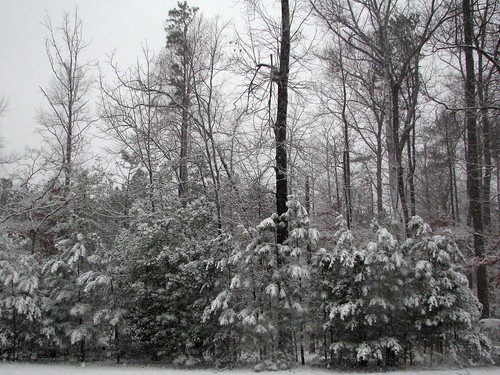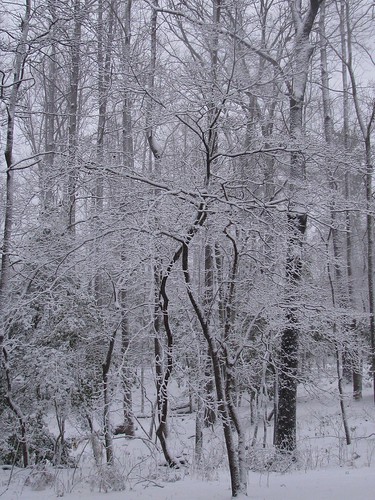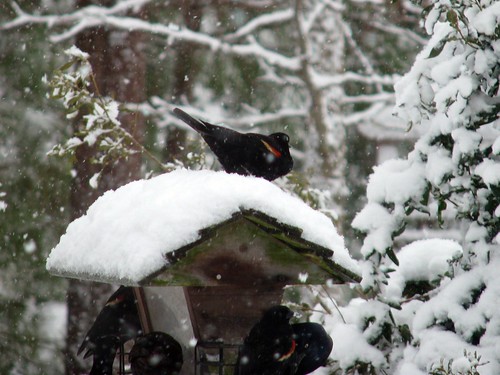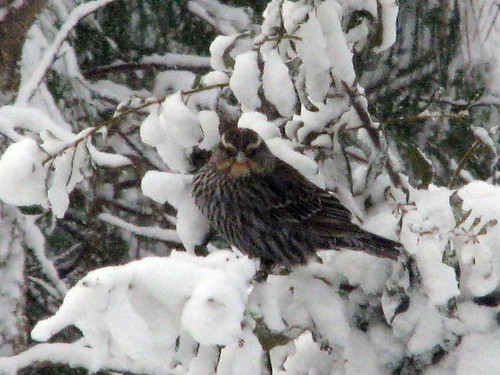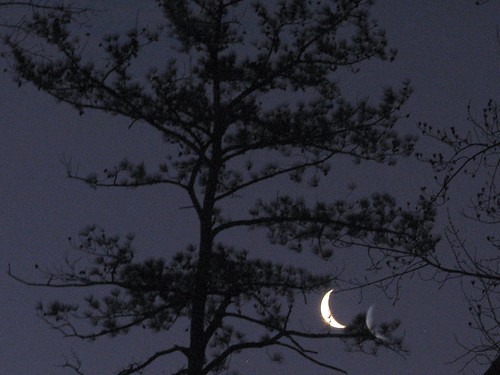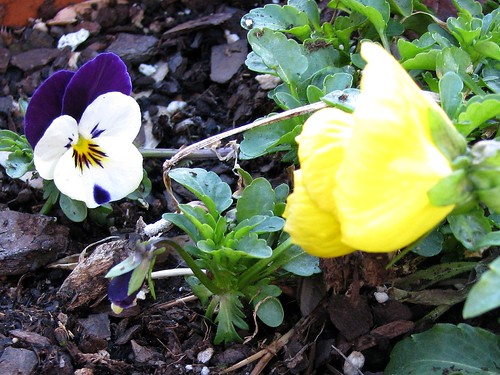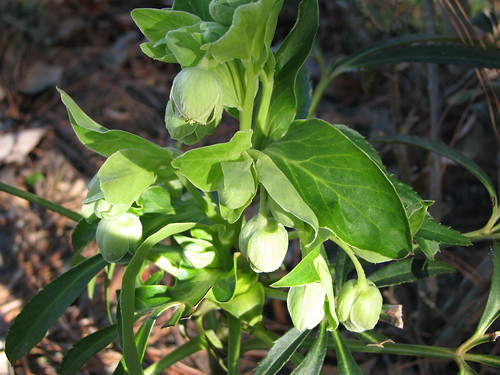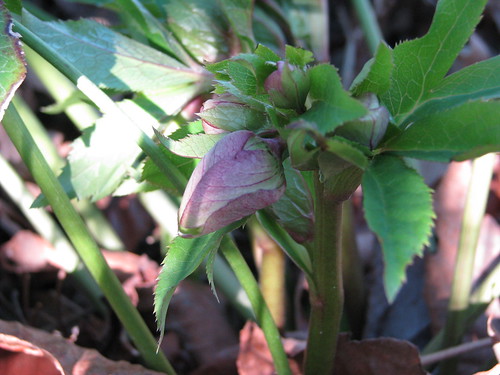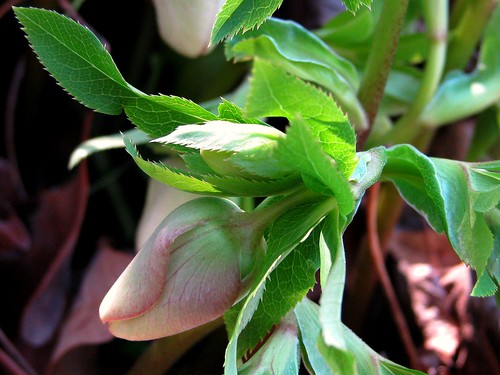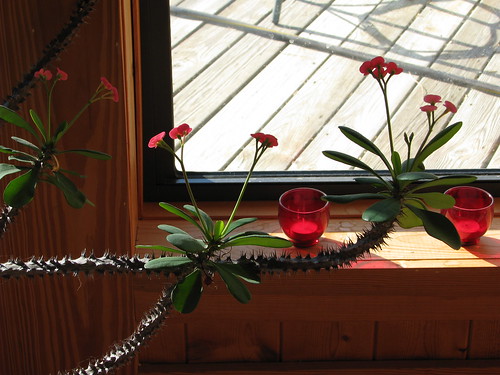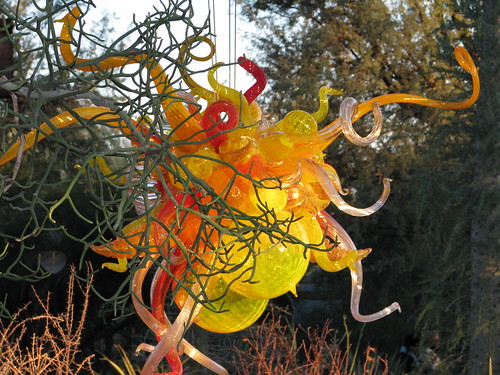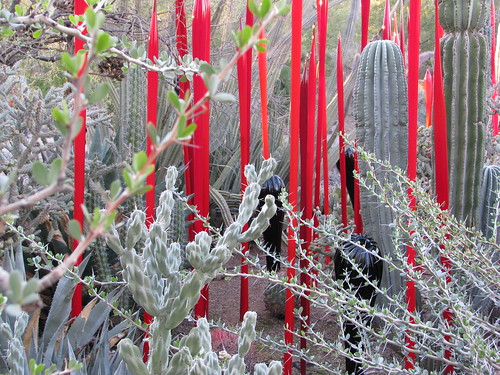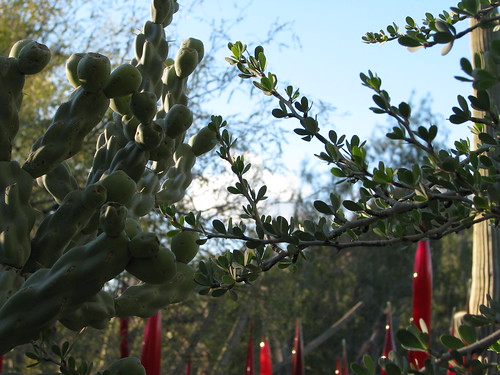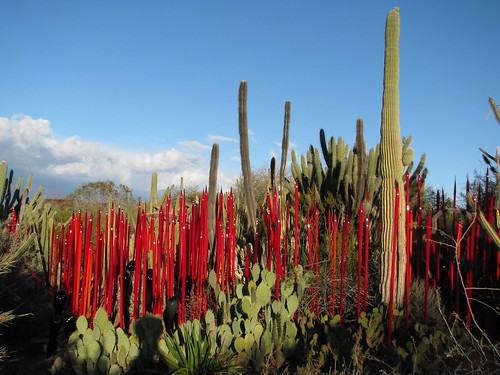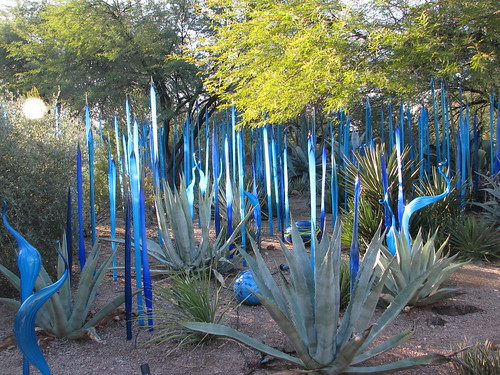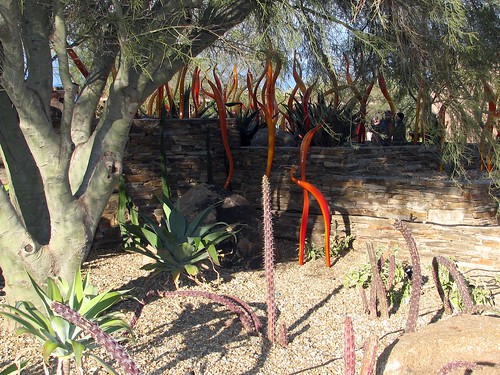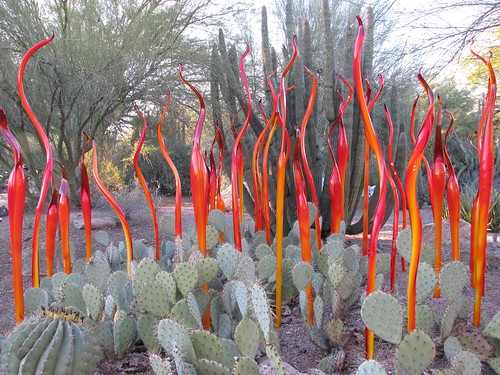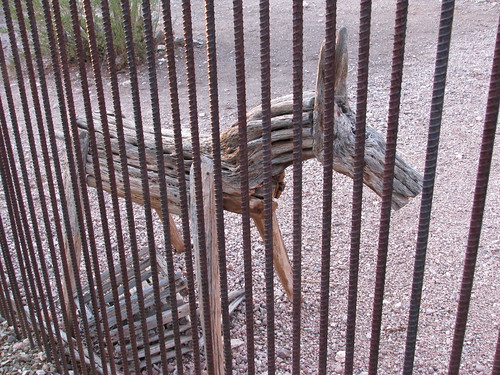There have been lots of great posts about Hellebores lately--
Phillip,
Frances,
Jeff, Gail, and
Tina, who made it plant of the month--and I know I'm missing lots of others. Mine weren't blooming by February's Bloom Day--which is unusual--but by last week, they were starting to open. I'm pretty sure that the three shown below are all
Helleborus orientalis, or Lenten Rose. The first two are passalongs from old gardens in Williamsburg--they were about 6" when my friend gave them to me when she thinned out a garden 13 years ago, and they moved with me in 2000. They're now about 2' high by 3'wide (the plant is slow growing--good side, they're pretty maintenance free).

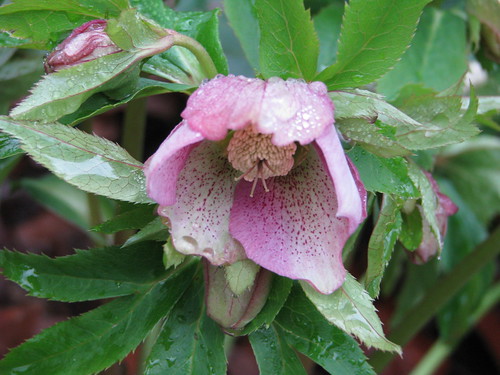
This next photo is of a young plant, a transplanted seedling from the one shown above. The young leaves are smaller and a lighter green.

One of the lovely things about hellebores is that they're evergreen--so as my friend Jacaranda reminds me, you need to pay attention to the foliage when you buy them: even though the bloom is long-lasting (well, about 3 months), you live with the leaves all year. The
orientalis leaves are long and dark green--you need to trim the old leaves occasionally and check under them for seedlings.
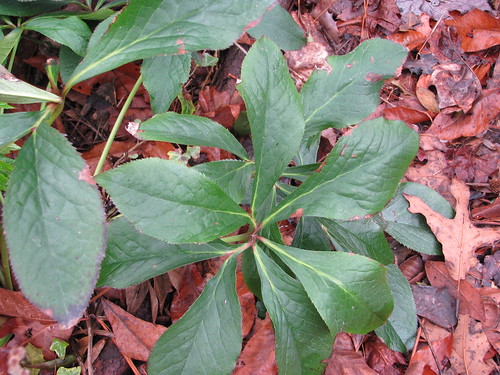
The leaves of
Helleborus foetidus, or stinking hellebore, are more sharply serrated, and the plant is more upright (or my young ones are, anyway).

When I posted on Bloom Day, I thought the
foetidus would bloom first--but they're still working. I'm wondering if some will face up (hellebores typically have drooping blooms, so many people try to plant them in slightly elevated sites. Mine are on the ground, so I hope for the occasional irregularity).
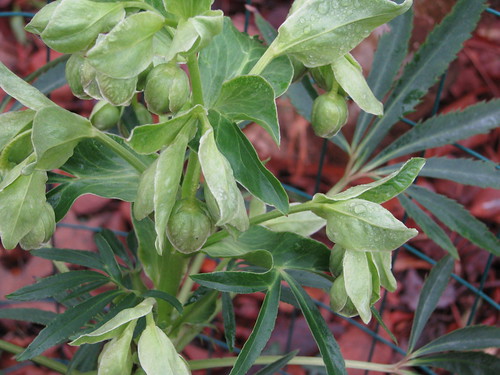
Anyway, when I admired Jeff's (
The Transitional Gardener's) pictures, he told me about
Pine Knot Farms, a nursery in Clarksville, Virginia that specializes in hellebores.

My friend Jacaranda and I started out early Saturday morning, hoping to meet Jeff at Pine Knots. But a little rain and a lot of Cosmo's-version-of-the-space-time-continuum intervened (I live 3 miles from an Interstate that takes me just about everywhere I want to go, and I haven't quite processed that you can't go 70+ once you're OFF the Interstate), and we arrived about ten minutes after Jeff left.
But the place was lovely--on the border of Virginia and North Carolina, the farm is located on a lake that almost renders the farm almost an island--you have to go into NC to get back to the farm in Virginia. It was raining steadily, but it didn't take away from the beauty of the place. Here's the farm pond (excuse the drops on the lens) looking out over the larger pond surrounding the farm.

Here's Jacaranda in the greenhouse, trying to decide between two pinks. Several of the regulars urged him to take both--eventually, he did--but look what he had to choose from.

And the colors are fabulous. As I understand it, the hybrids are experiments--this one dusted with that one's pollen--but when they get a plant they like, they propagate by cuttings--and we get to buy the rest. I was pretty happy with the experiments (though PLEASE someone correct my science if I've misrepresented things--I had a long talk with Jacaranda about breeding guppies on the way home and what I learned was basically that you shouldn't leave your five years' worth of work in a tank with an electric filtering system where a cat can knock it over. )
ANYWAY, here are some of the Pine Knot hybrids:
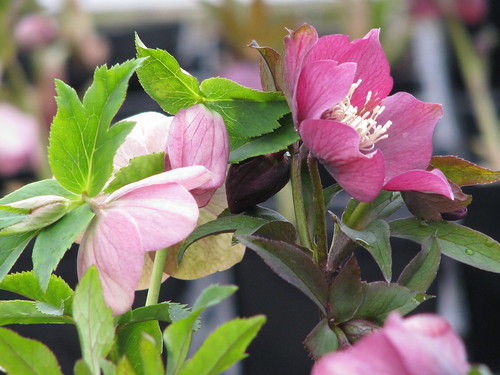
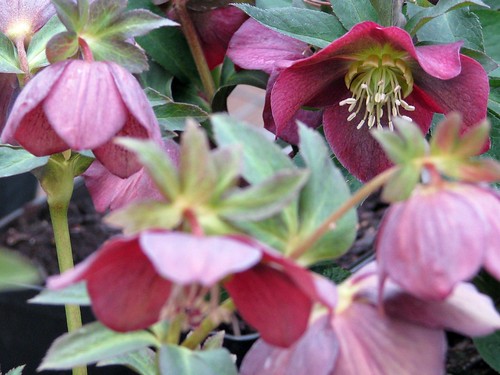

And I did my part for the economy! Here's my tub of hellebore hybrids, plus a new
Pieris floribunda, a new cultivar for me:

And some close-ups:
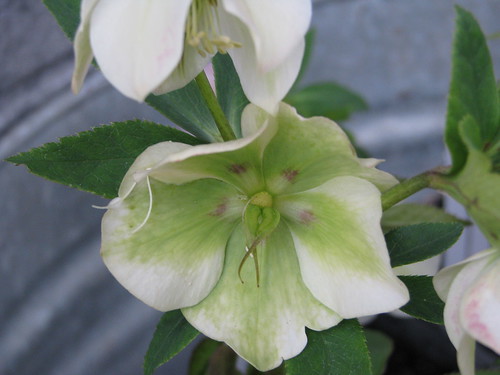

This was my favorite buy--this is one of the ones they now cultivate,
Helleborus x. smithii "Moonlight Sonata." That's a hardy cyclamen leaf next to it--Gail and Tina convinced me last fall to try one in the dry shade under a tree.
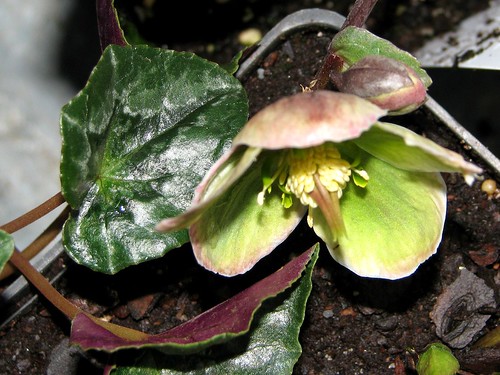
So clearly I
grabbed a few things besides hellebores.
Pieris japonica is one of my favorite shrubs; this
Pieris floribunda is supposed to to have showier flowers. I think it looks great next to this hellebore--a fortunate accident, just happens to be where the pots fit into the tub--but I think I'll try to keep them together when I plant them.

I also picked up a
Daphne odorata and an autumn fern. My last
Daphne survived a move and the hurricane, and then died the next year. I don't think it liked where I had to transplant it, but now that the fallen trees are cleared, I'm going to plant this one where the other one had thrived. Keep your fingers crossed for me--I love them, but they're finicky here.
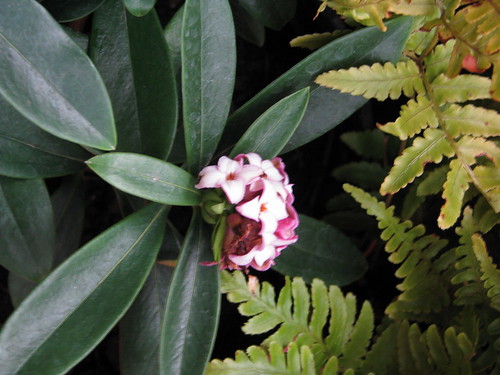
And how could I resist a
Ranunculus! I planted a bunch of bulbs last fall, but this way I know I'll have at least one flower!

So that was my trip on Saturday; by Sunday night it was snowing, and by Monday afternoon we had 5 inches. I took this shot Monday morning, when the accumulation was a little lighter--I hope those big hellebore leaves protect the little flowers.

And here's my other Ranunculus, protected from the cold . . .

I hope to get my snow pictures up in the next day or so--Monday's snow day should have helped time wise, except that I spent the whole afternoon taking pictures! Here's to a quick thaw.


